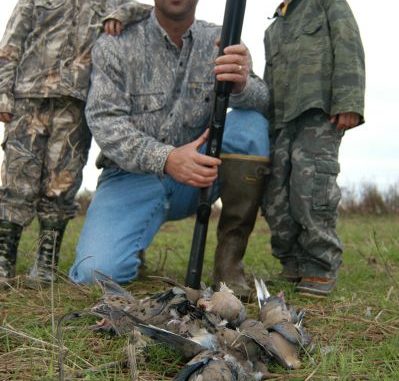
Don’t miss out on the great hunting
Most hunters who head for dove fields only around Labor Day weekend might be missing out on the opportunity for some great wing-shooting, because dove seasons in most Southeastern states don’t end until mid-January.
With hunters focusing on other game birds and animals, doves don’t receive nearly the pressure after Christmas that they do early in the season, when it can often sound like there’s a war going on from thousands of shotgun blasts.
Another factor to consider is that there’s not nearly as much available food on the ground for doves by this month, so if you’ve got something on their menu, you’re liable to have an awful lot of birds to shoot.
And even though the local population of doves was decimated in early September, migratory birds are filling in the gaps.
Roger Cox of Field and Fin Adventures in North Myrtle Beach, S.C., said if you have food on the ground for doves, they birds will find it.
“If you’ve got food for the doves, you can pretty well know you’ll have doves,” said Cox (843-333-0889). “We strip farm our sunflowers, corn, millet and grain sorghum, and we cut the sunflowers and corn for the early season hunts.
“I’ll be disking the places I had corn and sunflowers, and planting them in wheat for next year, and I hope that brings in some birds. Then, I’ve still got some sorghum and millet standing, and I’ll bush-hog that. With the wheat I’ll have planted and the millet and sorghum, we should have enough for them to eat.”
Jeff Burleson, a biologist with Southern Palmetto Environmental Consulting in Myrtle Beach, S.C., said crops still standing should be cut down a couple of weeks before late-season hunts are planned, allowing birds to find the seed.
“A substantial dove population uses the agricultural lands all winter,” said Burleson (843-685-2408). “While most corn and grain fields have been gathered and sold to market, some fields of soybeans, sorghum, millet and maybe even a late corn field have been left standing.
“Some landowners with late-season dove hunting in mind have left enough standing grain along field edges and in strips in the middle. And the available seed and bare dirt in isolated areas will attract doves. Also, if there are ditches, shallow ponds or areas susceptible to temporary ponding near fields, the margin of the waters should be disked thoroughly to allow doves easy access.”
Cox said late-season dove hunting can be more of a hit-and-miss deal. He said, that because you’re dealing with migratory birds, the number of doves using a field can change greatly from day to day.
“You can really have them one day, and the next day not have a bird,” he said.


